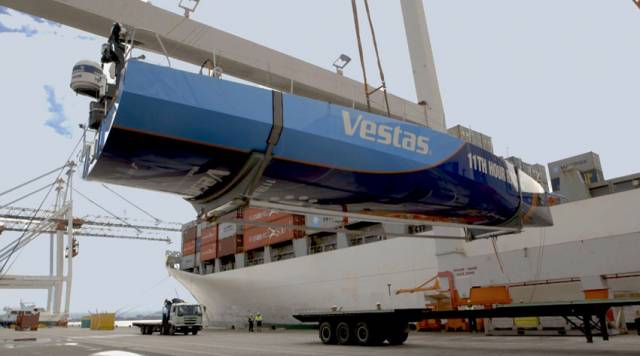#VOR - Organisers of the Volvo Ocean Race have commissioned an independent report into ocean racing at night in areas of high vessel traffic density, to establish what steps race organisers may take to mitigate risk going forward.
The move follows the collision between Vestas 11th Hour Racing and a non-racing vessel in the final stages of the Leg 4 into Hong Kong, which resulted in the death of a fisherman.
The report will be conducted by an Independent Report Team (IRT), chaired by Rear Admiral Chris Oxenbould AO RAN (Rtd) and assisted by Stan Honey and Chuck Hawley.
Rear Admiral Oxenbould is a former deputy chief of the Australian Navy and an experienced ocean racing yachtsman with a particular expertise in navigation. He is also the former chairman of Australia Sailing’s National Safety Committee.
Renowned current sailor and ocean navigational expert Stan Honey, who won the Volvo Ocean Race 2005-06 as navigator onboard ABN AMRO ONE, and Chuck Hawley, former chairman of the US Sailing Safety at Sea Committee, will assist Rear Admiral Oxenbould on the report.
The IRT will examine all the issues associated with racing a Volvo Ocean 65, or similar racing boat, at night in areas of high vessel traffic density, drawing on the experiences in recent editions of the Volvo Ocean Race.
Any findings from the report that could benefit the wider sailing community will be released. It is intended that the IRT will make its report available to Volvo Ocean Race by June 2018.
Race director Phil Lawrence said: “Understandably, there has been a lot of reaction to this incident in the sailing community, but the fact is, it takes time to make a responsible assessment of what could be done differently to minimise risk and increase safety.
“Our sailors, as qualified professionals, understand their responsibilities under the International Regulations for Preventing Collisions at Sea, Racing Rules of Sailing and the Rules of the Volvo Ocean Race.
“As race organisers, we will continue to evaluate safety as we race over the coming months and take the appropriate steps to minimise risk,” Lawrence added.
Meanwhile, Vestas 11th Hour Racing is preparing to rejoin the Volvo Ocean Race fleet for Leg 7 from Auckland to Itajaí in Brazil, which sets sail later this month.
Vestas withdrew from Legs 5 and 6 for shipping their boat directly to New Zealand for repairs — and in a statement, the team says its crew return to the race “with a mixture of heavy hearts and anxiousness”.
































































